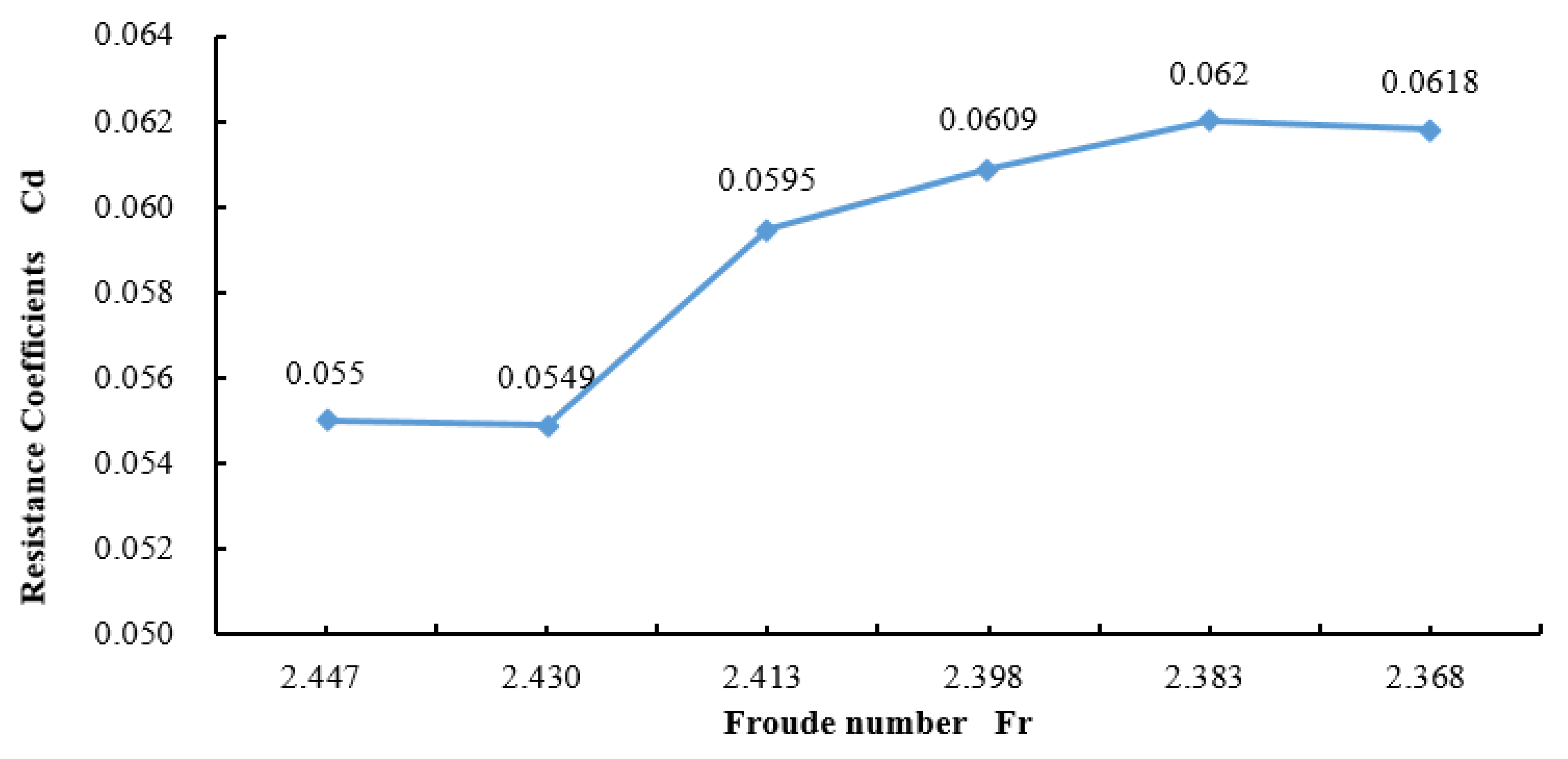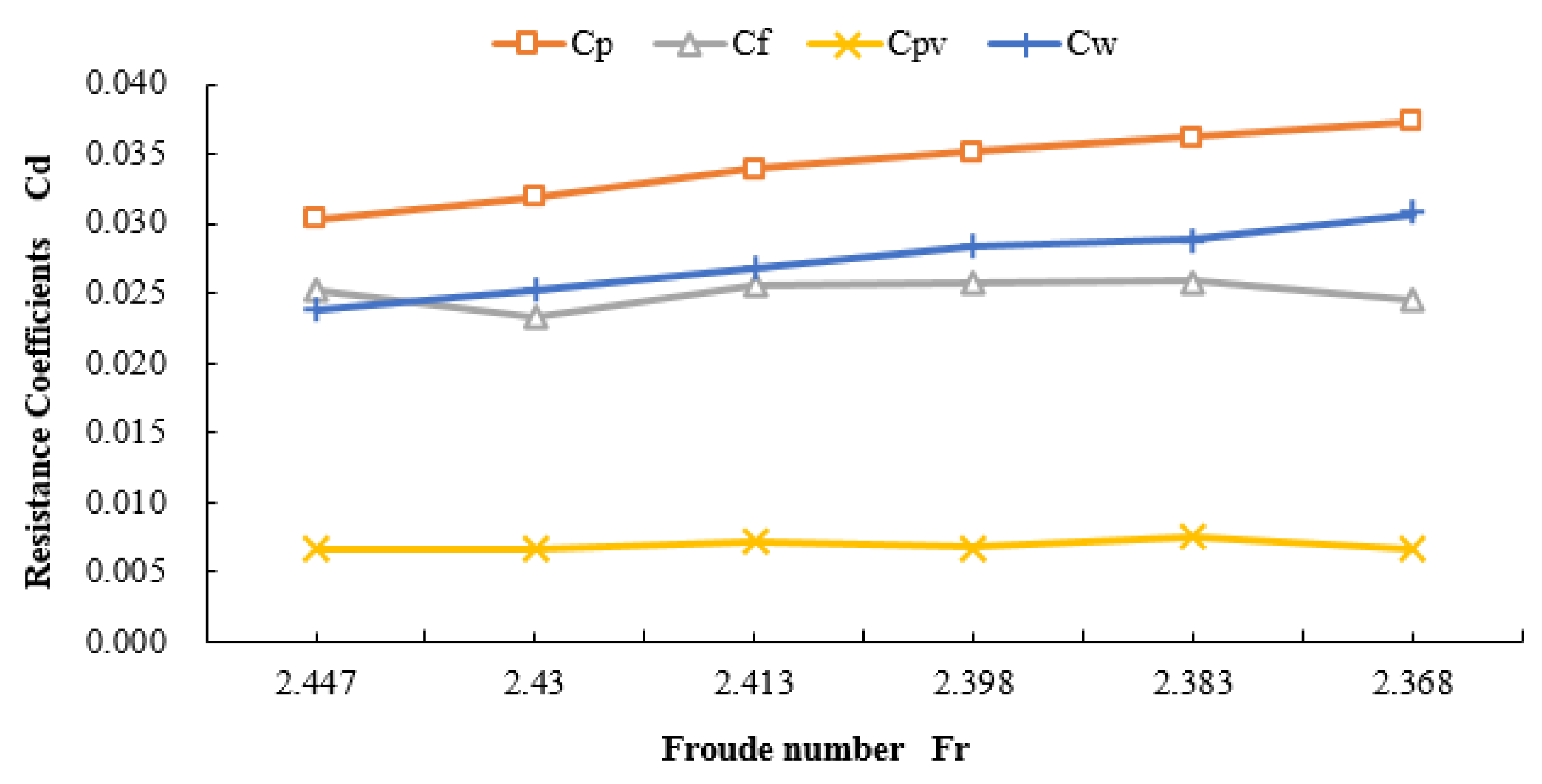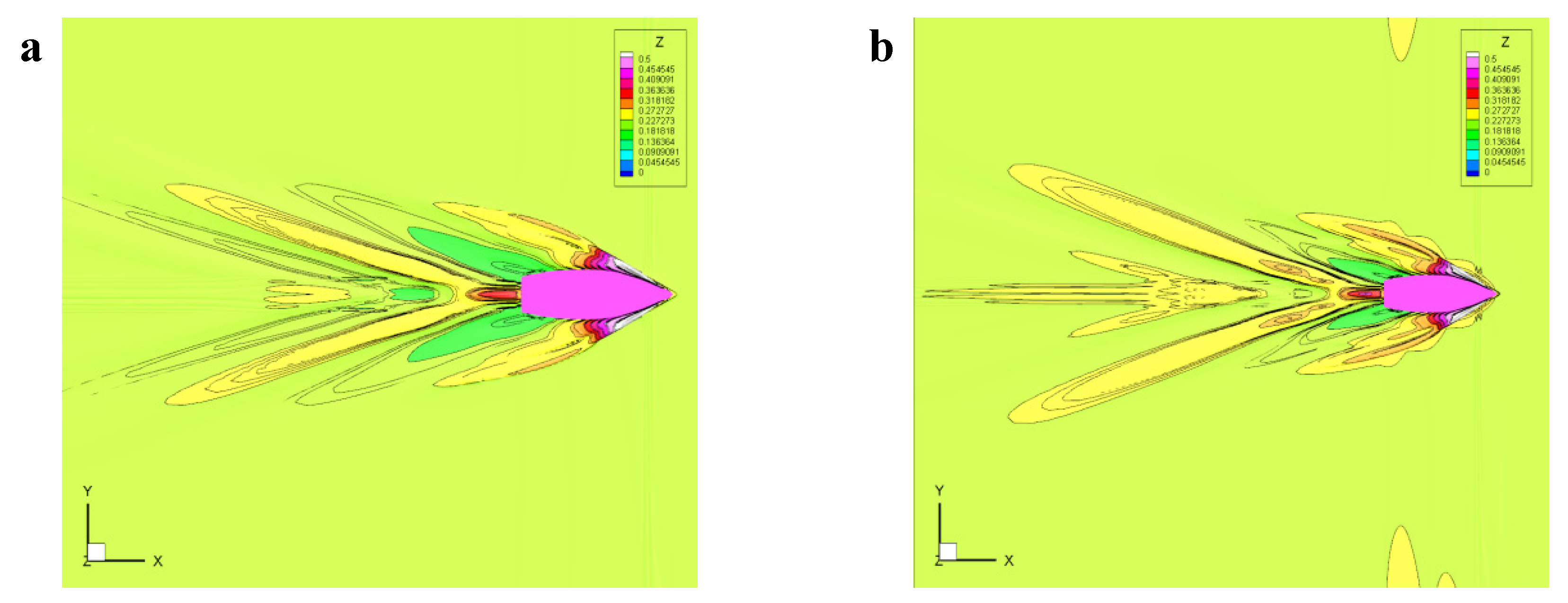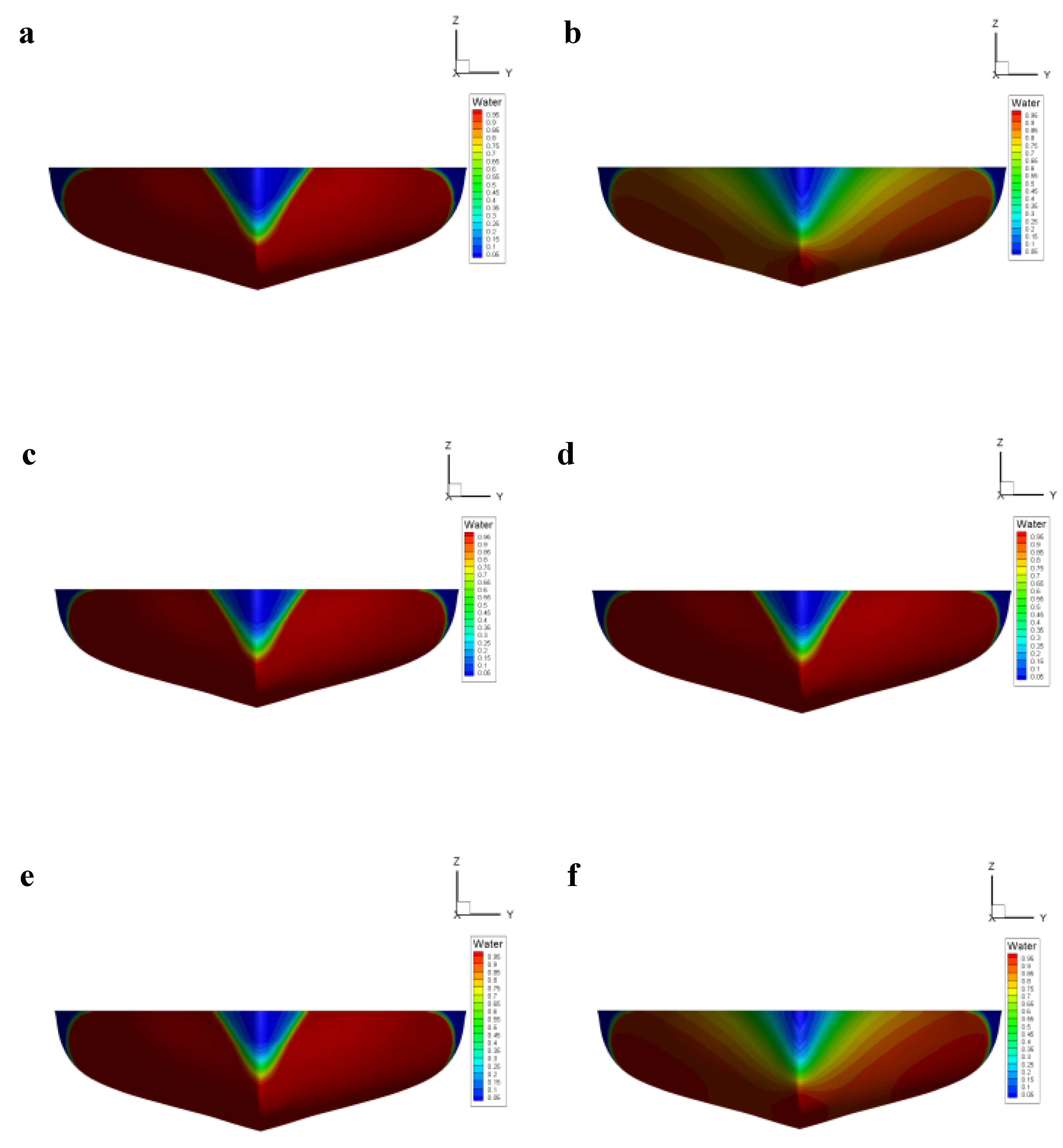Investigation on Hull Hydrodynamics with Different Draughts for 470 Class Yacht †
Abstract
:1. Introduction
2. Methods of Analysis
2.1. Numerical Model and Conditions
2.2. Boundary Conditions
2.3. Solution Setup
3. Numerical Results and Analysis
3.1. Draught Resistance Coefficients Changing with the Froude Number ()
3.2. Resistance Analysis
4. Conclusions
Acknowledgments
Conflicts of Interest
References
- Parolini, N.; Quarteroni, A. Mathematical Models and Numerical Simulations for the America’s Cup. Comput. Meth. Appl. Mech. Eng. 2005, 194, 1001–1026. [Google Scholar] [CrossRef]
- Viola, I.M.; Enlander, J.; Adamson, H. Trim Effect on the Resistance of Sailing Planning Hulls. Ocean Eng. 2014, 88, 187–193. [Google Scholar] [CrossRef]
- Akimoto, H.; Miyata, H. Finite-volume Simulation Method to Predict the Performance of a Sailing boat. J. Mar. Sci. Technol. 2002, 7, 31–42. [Google Scholar] [CrossRef]
- Böhm, C.; Graf, K. Advancements in Free Surface RANSE Simulations for Sailing Yacht Applications. Ocean Eng. 2014, 90, 11–20. [Google Scholar] [CrossRef]
- Campbell, I.; Owen, M.; Provinciali, G. Dagger-board Evaluation for an IMOCA 60 Yacht. Ocean Eng. 2014, 90, 2–10. [Google Scholar] [CrossRef]
- Mylonas, D.; Sayer, P. The Hydrodynamic Flow around a Yacht Keel Based on LES and DES. Ocean Eng. 2012, 46, 18–32. [Google Scholar] [CrossRef]
- Ma, Y.; Tang, Y.H.; West, N.; Zhang, Z.Y.; Lin, S.J.; Zheng, Q.Z. Numerical Investigation on Trimming of a Single Sail in a Regatta. Sports Eng. 2016, 19, 81–90. [Google Scholar] [CrossRef]
- Zheng, Q.Z.; Ma, Y.; Zhang, Z.Y.; Lin, S.J.; Tang, J.T.; Liu, L. Experimental Research of Sailing Hull Shape Measurement in Olympic Games. J. Sports Adult Educ. 2015, 31, 76–80. [Google Scholar]
- Huetz, L.; Guillerm, P.E. Database Building and Statistical Methods to Predict Sailing Yacht Hydrodynamics. Ocean Eng. 2014, 90, 21–33. [Google Scholar] [CrossRef]




| The Project of the Olympic Class 470 Yacht | Numerical Results | |||||
|---|---|---|---|---|---|---|
| Different draughts (m) | 0.1742 | 0.1774 | 0.1804 | 0.1834 | 0.1963 | 0.1892 |
| Hull displacement (kg) | 230 | 240 | 250 | 260 | 270 | 280 |
| Froude number (Fr) | 2.447 | 2.43 | 2.413 | 2.398 | 2.383 | 2.368 |
| Pressure drag coefficients () | 0.0303 | 0.0318 | 0.0339 | 0.0352 | 0.0362 | 0.0373 |
| Frictional resistance coefficients () | 0.0252 | 0.0232 | 0.0256 | 0.0257 | 0.0258 | 0.0245 |
| Viscous pressure resistance coefficients () | 0.0066 | 0.0066 | 0.0071 | 0.0068 | 0.0074 | 0.0066 |
| Wave resistance coefficients () | 0.0237 | 0.0252 | 0.0268 | 0.0284 | 0.0288 | 0.0307 |
| 42.7% | 45.8% | 45% | 46.6% | 46.4% | 49.7% | |
Publisher’s Note: MDPI stays neutral with regard to jurisdictional claims in published maps and institutional affiliations. |
© 2018 by the authors. Licensee MDPI, Basel, Switzerland. This article is an open access article distributed under the terms and conditions of the Creative Commons Attribution (CC BY) license (https://creativecommons.org/licenses/by/4.0/).
Share and Cite
Ma, Y.; Lin, S.; He, Y.; Lei, X.; Zhang, S. Investigation on Hull Hydrodynamics with Different Draughts for 470 Class Yacht. Proceedings 2018, 2, 307. https://doi.org/10.3390/proceedings2060307
Ma Y, Lin S, He Y, Lei X, Zhang S. Investigation on Hull Hydrodynamics with Different Draughts for 470 Class Yacht. Proceedings. 2018; 2(6):307. https://doi.org/10.3390/proceedings2060307
Chicago/Turabian StyleMa, Yong, Shijie Lin, Yangying He, Xiaoshan Lei, and Song Zhang. 2018. "Investigation on Hull Hydrodynamics with Different Draughts for 470 Class Yacht" Proceedings 2, no. 6: 307. https://doi.org/10.3390/proceedings2060307




